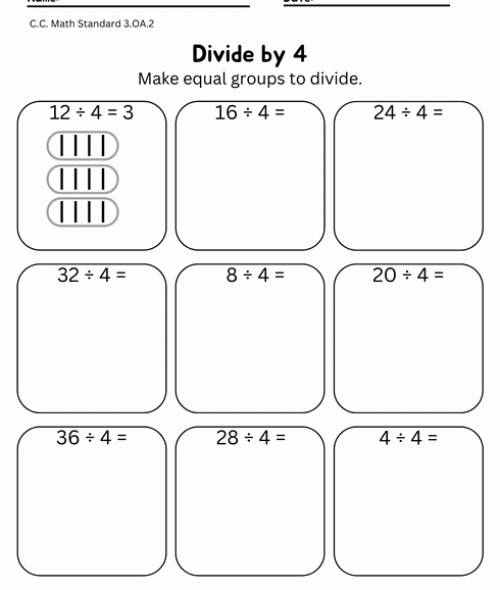Divide into groups
Teaching kids to divide numbers evenly into groups helps them develop important problem-solving and critical-thinking skills that will help them in school and their personal lives. Dividing numbers evenly into groups, also called “division without remainders,” is a basic math skill that helps kids learn about numbers and how they can be split up.
It teaches kids how to think about numbers in a structured way and helps them understand the idea of equal parts. This skill is important in many real-world situations, such as when a group of people needs to share food or other resources or to divide tasks so that everyone does the same amount of work. It also lays the groundwork for more advanced math ideas like ratios, proportions, and fractions.
Grade often used by:
2nd Grade | 3rd Grade
Subject:
Math | Operations and Algebraic Thinking
Standards:
Common Core State Standard:
3.OA.A.2


